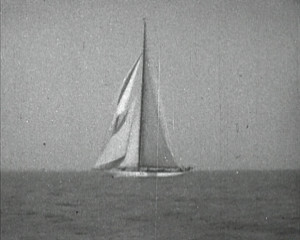
"One of a series of films recording the travels of the schooner Elver, her owner V.B. Harrison, crew and guests. Scenes are shot from the Elver including adjustment of sails, sea, waves, buoys, coastline and passing boats, sometimes close enough to see crew in detail." (EAFA Database)
"This picture was a finely photographed record of water from the ocean to the clouds and back to the ocean again through its various stages. His photography rated high." American Cinematographer, Dec. 1934, 377.
"The one reel film, Water, is a pleasant blending of plan and montage. In it, Howard Demarest, ACL, has traced what may be termed the life cycle of water — from its restless abundance in the great oceans, its radiant journey to banking clouds, the return in rainfall, until, through the coursing of streams and rivers, it blends once more in the sea. Parts of this great, natural continuity Mr. Demarest had on film before the present picture was definitely conceived. Other parts he made following the conception, sometimes to fill it out, again to improve it with retakes. In all these deftly integrated sequences his photography is consistently crisp, sparkling and steady. In many of the scenic views it approaches perfection in beauty of composition and lighting. Attractive and well worded titles round out a piece of work that is definitely superior." Movie Makers, Dec. 1933, 522.
"A rather thorough glimpse of the little town of Salzburg, Austria, is given to us in this well constructed little film. We find music, distinctive dress, churches, parks, and people. The narrator and the sound track go a long way towards amplifying the mood that is created by the visuals" PSA Journal, Sept. 1966, 36.
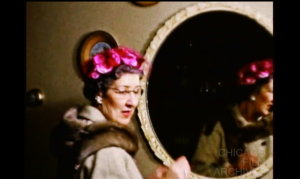
"An amateur film made by and starring the husband and wife duo, John & Evelyn Kibar. John is frustrated with Evelyn’s hat shopping habits. To distract John’s frustrations, Evelyn surprises John with a cake. Title cards with dialogue are dispersed throughout the film." Chicago Film Archives
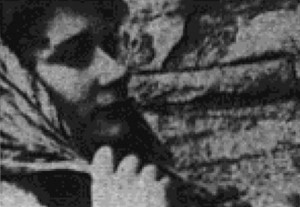
"The Stray is a well written little story concerning a lonely little woman who returns to her husband, but finds he wants no more to do with her, for reasons explained as the story unfolds. Its ring of sincerity, coupled with good acting on the part of both the woman and her husband, was most surely the primary basis for the film landing in the top ten" PSA Journal, Aug. 1967, 36.
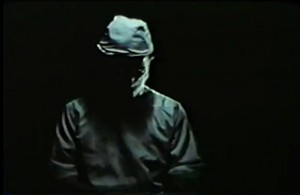
"Filmed by Arthur H. Smith of San Francisco, the story opens with Jackie, a lad of 4 years, playing on the sidewalk near his home. Observing a kitten crossing the street, his natural inclination toward pets impels him to run into the street after it. An unseen car bears down upon the boy and the driver is unable to avoid striking him down. Jackie is rushed to the hospital where his life is saved with difficulty, although he will be permanently crippled. The doctor advises Jackie's parents that although he has survived the operation, the lad has only a short time to live." Home Movies, Dec. 1946, 749.
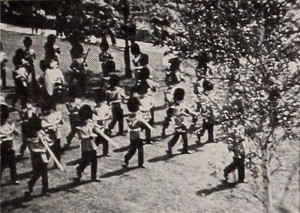
"In Streets of Peace, Lewis B. Sebring, jr., presents a manifold accomplishment in film. Here is a record of the New York World's Fair 1939, but a record which, because of its selectivity, gives the impression of completeness in setting forth a single theme, although the material is both voluminous and varied. Here, also, is an interpretation of the epic idea behind the foreign participation in this great American exposition, the vision of peace, which has since been so rudely interrupted. Mr. Sebring takes his camera through the streets of peace, literally, and we see one after another of the foreign buildings and exhibits at the Fair; we also look at the different national celebrations in the Court of Peace. The visit of the King and Queen of England is recorded in considerable detail. After a scene of children of many lands uniting in a gathering in the Children's World, we find the pointed query as to what these youngsters will make of the "world of tomorrow," and the picture closes with distinguished shots of the United States Building, with its flag and the word "Peace," which appears on its façade. Mr. Sebring's titling is admirable, both in wording and in execution. His Kodachrome exposures have less good moments, but his camera handling is otherwise pleasing. Here is a workmanlike and finished recording of a great international event." Movie Makers, Dec. 1939, 635-636.
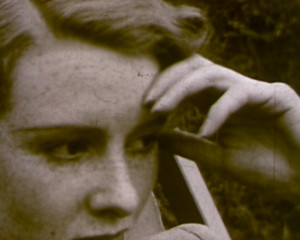
"Amateur filmmaker, cinema historian and railway engineer H.A.V. Bulleid employs an array of camera effects and trick photography techniques in this experimental short. Bulleid uses a mirror to distort a woman's reflection and a lens mask to conjure multiple images of her within the same frame, followed by a brief sequence showing how it was created. A ghosting effect uses double exposure to show the woman getting up from the chair but leaving her body behind. Bulleid also uses coloured filters and gauze diffusion to alter the look of his shots, and slow motion to change their visual impact. To display the versatility of interior shooting under normal lighting conditions, Bulleid uses orthochromatic film stock, before returning to exterior effects, using greased disc diffusion to create a dreamlike wash over the image. The film concludes with two sequences created using trick photography techniques including film reversal and split-screen shooting, and an example of step-zooming which gradually zeros in on the Big Ben clock tower at the Houses of Parliament in London." (EAFA Database)
"Mathis Kverne returns to the winner's circle with another delightful and imaginative animated cartoon, Strokets Kavalerer—which has been translated for us "Main Street Romeos." This time we meet two boy paint brushes who try, with varying degrees of success, to win the hand of an attractive girl brush. One, a wordly boulevardier, plies her with costly presents, while the other, a real booby, offers her naive, if presumptuously intimate, gifts. When the lady has at last been won—by the booby, of course—we follow the happy couple through their marriage and the birth of their first born, a yellow brushlet of undetermined sex. Although this film may not captivate the viewers as completely as did Mr. Kverne's Muntre Streker (Ten Best 1952) that picture's promise is more than fulfilled. The animation here is smoother in all respects, the development of the story line more definite and the personalities of the individual characters more precisely realized. The result is a film of lighthearted charm which will enchant one and all. And puzzle them too, for the animated methods used by Kverne are still his own secret!" PSA Journal, Jan. 1954, 49.
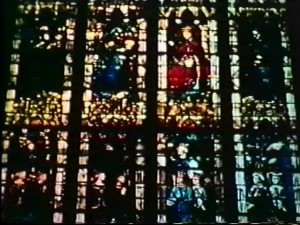
"Studies in Blue and Chartres Cathedral, a cerulean cinema achievement, one 400 foot reel in full Kodacolor by John V. Hansen, ACL, shows what an artist's and a colorist's eye can select and record. While this film is in some sense a travel record, Mr. Hansen definitely made it a point to choose those scenes and vistas that revealed the open sky, whether seen in patches through the interlaced branches of trees or as a dim, distance haze, shimmering up from the tops of far off mountains. Here are deep blue skies overhead, merging into white mist at the horizon, apple green, azure, so many hues that it is a revelation to see that a mechanical process can so beautifully record nature. Mr. Hansen presents to the audience's eyes such a varying kaleidoscope of blending colors in his continuity that it is difficult to do the entire effect justice by mere description. But among his outstanding technical achievements are the recording of sunlit glades in a dense forest, especially effective cloud and sunset shots, distant and close shots and side lighting and backlighting in profusion. A further, outstanding triumph in color technique was shown in Mr. Hansen's recording of the vivid, glowing hues of the stained glass windows, taken from the interior of the cathedral at Chartres. Here, he succeeded in capturing that peculiar, deep dyed transparency found only in the colors of old stained glass. It is questionable if any other method of reproducing color can give such a real and beautiful rendition of stained windows as the motion picture. Certainly no color printing process can compete. The film was rounded out by some charming long shots of the carefully cultivated, rolling hills of Denmark." Movie Makers, Dec. 1932, 538, 560.
Total Pages: 299